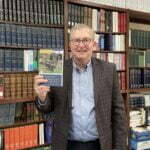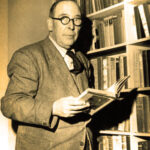Real Hope for Addicts
Theodore Dalrymple is an important thinker and writer who has just released an important new book. The book is about the growing problem of drug addiction. Dalrymple is aptly qualified to speak on this problem as he is a retired prison doctor and psychiatrist.
He has spent many years working with drug addicts, and knows firsthand the problems associated with drug dependency. His newly released book, Romancing Opiates: Pharmacological Lies and the Addiction Bureaucracy, has caused a heated debate.
The controversy surrounding the book has led to a recent symposium in which he takes on his critics. Found in the October 13, 2006, frontpagemag.com, it is a lengthy but worthwhile read.
Dalrymple first lays out his main premise: “My general thesis is simple: that addiction is not an illness and treatment is therefore metaphorical rather than real. Mao Tse Tung threatened addicts with dire consequences if they did not stop, and they did stop. This suggests that there is a category difference between addiction and, say, cancer of the bowel.”
He continues, “Addiction is one answer to perennial existential problems – in my view not a very good answer, but I don’t claim to have a perfect one – and so-called medical treatment is beside the point. It often does tangible harm, and in my view does harm in an intangible way as well by persuading addicts that they ‘need’ the help of professionals to stop. This, of course, is all to the advantage of a group of professionals.”
He argues that breaking free of addiction is not so difficult as many would have us believe. “I do not agree that conditioning makes people automata. If it were true that addicts really cannot help themselves, that they lose all volition in the matter, it would justify the most illiberal measures to help them, to prevent them from destroying themselves and so forth. But the fact that millions of addicts, not just of opiates, have given up, merely by taking thought, suggests that conditioning is not very important.”
Opiate substitutes of course often become just as addictive: “In the Lancet just two weeks previously, it was reported that buprenorphine has become the drug of abuse favoured by tens of thousands in the Republic of Georgia – all in the last 3 years, since addicts in France started selling their treatment to dealers to export it to Georgia (the drug was already the favourite opiate of abuse in Finland, thanks to the same source). At the very least, this suggests how deeply addicts value their treatment. At the same time, in the New England Journal of Medicine, a trial was reported with a clever drug which combined buprenorphine with naloxone, so that, if injected, it precipitated withdrawal symptoms. A very clever drug combination, if I may say so.”
Indeed, he argues that “the whole rationale of treatment is flawed. It is true that, if you take the case of methadone, you can show that a certain small percentage do well on it. That is true; but it would also be true that if you gave money to burglars – and there would be a dose-response curve – some, not all, would stop burgling. That does not make burglary a disease. In any case, treatment is not the answer to the social problem and never will be: in England, for example, stopping one person from taking heroin is not like interrupting the transmission of TB; it is just transferring the problem to someone else, as the drug-dealer finds another willing client/dupe. This fits what has happened, at least in Britain.”
But what about a genetic basis of addiction? “I accept that, within a population, there may be some genetic predisposition to abuse drugs of various kinds (or, in the case of East Asians, not to take alcohol). But I do not think that you can explain the very large variation between populations by means of genetics. When I started work in the city in which I spent the last part of my career, heroin addiction was very rare. By the end of my career, it was very common. (I don’t think my presence was causally related to the increase). This huge increase cannot be explained genetically: in the 1950s there were at most a few score addicts, and by 2000, between 150 and 300,000.”
Concludes Dalrymple: “I would say that the idea of treatment is the one that belittles addicts, since it suggests that, unlike other people, they cannot behave other than as they do. The same has been said of criminals. They are then less than fully human. I am not so pessimistic about them. It is, besides, empirically mistaken. However, so long as addicts tell lies to themselves and doctors, and doctors tell lies to addicts (and the whole idea of ‘treatment’ is a lie), the absurd pas de deux will continue.”
The entire debate is well worth a read. As a person lacking the relevant expertise, I cannot claim that Dalrymple’s position is rock solid here, but given the scourge of drug addiction, anything that offers hope to the addict must be a step in the right direction.
http://frontpagemag.com/Articles/ReadArticle.asp?ID=24917
[858 words]




















This is an interesting article, and it has comfirmed some of my private views about OSTP [opiate substitute treatment programmes] in the correctional sphere.
I heard a prisoner on OSTP declaring “the first thing I’ll do when I get out is go to Footscray and find a hit” This to me was really a declaration of failure of OSTP to treat addiction. Indeed those on opiate substitution still seem to “hang” for their daily dose, just as illicit drug users may do.
Dare I say it without being shot down in flames, is OSTP mainly about legal management & control of drug addicts by state endorsed pharmacology?
G Weedall